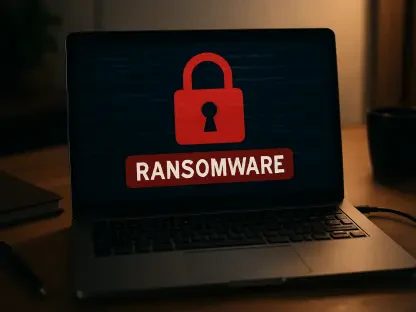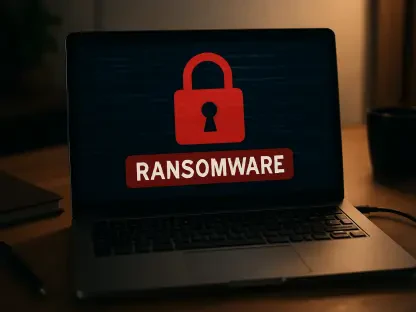North Korea has launched a concerning new cyber offensive targeting cryptocurrency developers through an NPM (Node Package Manager) supply chain attack. This aggressive campaign, primarily aimed at developers using Exodus and Atomic cryptocurrency wallets, underscores the nation’s ongoing efforts to siphon funds from economies it perceives as adversaries. By deploying a sophisticated JavaScript implant known as Marstec#, cleverly concealed within GitHub repositories and NPM packages, North Korea has escalated the cyber threat landscape, and developers everywhere must take heed.
The Emergence of Marstec#
Recent research conducted by SecurityScorecard has shed light on the scale and impact of Marstec#, revealing that 233 individuals have already fallen victim to this insidious implant. While details about the specific victims are currently limited, the severity of the threat posed by Marstec# is exceedingly clear. The implant’s sophisticated ability to bypass both static and dynamic detection analyses makes it a particularly dangerous entity within the cryptocurrency development ecosystem.
The inherent risks of this supply chain attack are substantial because corrupted software packages can be unwittingly downloaded and integrated into applications, thus potentially compromising many more users. Marstec# employs a less commonly observed command and control (C2) infrastructure, communicating over port 3000 instead of the more frequently used ports such as 1224 or 1245. Notably, this implant omits some well-known features from previous campaigns led by the Lazarus Group, like the React web panel observed in the Phantom Circuit attack.
Targeting Cryptocurrency Wallets
Marstec# has been meticulously designed to target cryptocurrency wallets across an array of operating systems, including Windows, macOS, and Linux. Once it infiltrates a compromised system, it meticulously scans for targeted wallets, reads their contents, and extracts relevant metadata. The implant exhibits advanced obfuscation techniques previously unseen in operations executed by Lazarus, as indicated by SecurityScorecard. These techniques greatly enhance the implant’s ability to remain undetected within software packages.
SecurityScorecard has identified a range of sophisticated techniques employed by Marstec#, including control flow flattening, self-invoking functions, randomly named variables and functions, Base64 string encoding, anti-debugging measures, and string splitting and recombination. Additionally, it sometimes utilizes alternative methods such as Base85 encoding and XOR decryption to further obscure its malicious intentions and operations. This intricate design shows how determined and resourceful North Korea’s cyber operations can be.
Evolution of Lazarus Group’s Tactics
Operation Marstech Mayhem signifies a marked evolution in the approach to supply chain attacks by the Lazarus Group, according to Ryan Sherstobitoff, Senior Vice President of Threat Research and Intelligence at SecurityScorecard. The introduction of Marstec#, with its advanced layers of obfuscation and other sophisticated techniques, demonstrates the group’s enhanced capabilities in circumventing traditional detection mechanisms. This advancement indicates a troubling development in the ongoing cat-and-mouse game between cybercriminals and security professionals.
First detected in December 2024, the campaign leverages a C2 server hosted on Stark Industries, a hosting provider notorious for servicing cybercriminal entities, particularly since the onset of the Russian invasion of Ukraine. SecurityScorecard’s investigation traced Marstec#’s origin to a GitHub account under the name SuccessFriend, associated with the Lazarus Group. This account, active since July 2024, initially contributed legitimate code to various projects before transitioning to malware development by November, marking a shift in tactics that cybersecurity experts found alarming.
Implications for Web3 Projects
The targeting of Web3 projects, especially those utilizing the NPM registry, signifies an escalated threat landscape, one that requires immediate and sustained attention from developers and organizations alike. The Lazarus Group’s practice of injecting altered code into the NPM registry presents a significant risk, as any developer can unknowingly execute this code and potentially compromise their system. Although the extent of the popularity and visibility of the compromised packages remains undisclosed, the implicit dangers underline the need for heightened cybersecurity vigilance across the board.
Complementary insights from Microsoft’s recent intelligence reports provide further context to North Korea’s extensive cyber activities. The Kimsuky team, another prominent North Korean cyber unit, has been employing tactics such as impersonating South Korean government officials to cultivate trust with their victims. This strategy compels the victims to execute harmful PowerShell code with administrative privileges. The orchestrated method involves guiding victims to a URL contained within a PDF sent through email, with subsequent steps that lead to machine compromise, showcasing the calculated and methodical nature of North Korea’s cyber operations.
Strategic and Calculated Cyber Operations
North Korea has launched a troubling new cyber offensive targeting cryptocurrency developers through an NPM (Node Package Manager) supply chain attack. This aggressive campaign primarily targets developers using Exodus and Atomic cryptocurrency wallets, highlighting North Korea’s ongoing endeavor to siphon funds from economies it views as adversaries. By embedding a sophisticated JavaScript implant known as Marstec#, skillfully hidden within GitHub repositories and NPM packages, North Korea has significantly escalated the cyber threat landscape. This new development serves as a stark reminder for developers worldwide to exercise heightened caution and bolster their security measures to protect against this evolved threat. The use of advanced tactics and hidden malware in repositories indicates a growing level of sophistication in state-sponsored cyber warfare, making it imperative for the tech community to stay vigilant and proactive in securing their digital assets and infrastructure.









